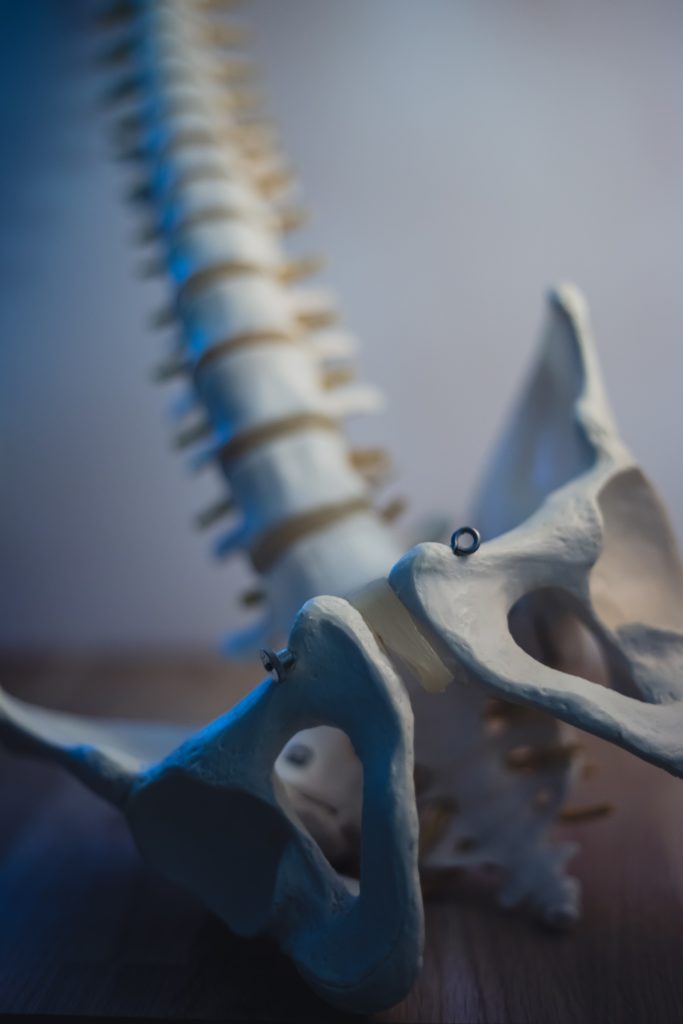You need to strengthen your pelvic floor muscles! Are you doing your kegels? You’ve probably heard these questions before. Often it seems like if you are not tending to your private parts, working with jade eggs, or exercising your pelvic muscles, you are failing as a person.
If you have never heard of the jade egg, are you even allowed to call yourself a modern goddess? Well, yes you most definitely are!
Unfortunately, intimate health is not a very mainstream part of education and when it is taught, it often comes with a lot of fear-based information about all the risks involved and the deep shame surrounding it. With that in mind, let’s start with some re-education.
Male or female, at the base of your torso you have a complex array of muscles which together are known as the pelvic floor.
This area, also called our pelvic diaphragm, has an essential role to play in relation to your urinary organs, sexual function, reproductive health, and even our breathing.
Eastern traditions nod to this region as the source of creative energy and innate life force.
It is a key center of our health, well-being, and creativity, but yet it is still regarded as the unknown down there zone for many people.
So let’s try and change that by shedding some light on this truly fascinating part of the body.
What Is the Pelvic Floor?

The pelvic floor is a diamond-shaped hammock of muscles that is spread between the pubic bone, the tailbone, and the two sitting bones. It actually closes the torso from below, and it supports all your abdominal organs. Not only does it span the bottom of the torso, but it also consists of three layers:
- The pelvic diaphragm, or levator ani, is the deepest layer of the pelvic floor. It holds all internal organs up, but mainly the anus. It also supports the organs when any pressure is put on them, like when you cough.
- The perineal membrane is the second layer, and it maintains stability in the pelvic floor. This is where we find the famous perineum. You could imagine this layer functioning like poles holding a tent in place.
- The urogenital triangle is the most superficial layer and is located in the front. This layer brings stability to the genitalia and plays an important role in your sexual functioning.
Isn’t it incredible that all that intricate functioning is present at the very base of our torso?
How Common Are Pelvic Health Problems?
Studies show that many people actually suffer from pelvic health issues. Many of these issues go unreported as it is still an area of the body that tends to be subject to taboo and shame.
- Take incontinence for example. Studies done in a number of northern European countries showed that 48% of women experienced some level or type of incontinence. Nearly 50% of women surveyed were not always able to control their flow of urine! Imagine how that would impact someone’s quality of life. And this is just one of many pelvic health disorders. What about chronic pain syndromes, impotence, prostate health problems, pelvic organ prolapse, and many others?
These are all issues that can be incredibly impactful to affect
What Causes Pelvic Health Issues?
There are many reasons that pelvic health issues occur. They can be purely physical, due to things like infections, pregnancy, poor posture, poor breathing, trauma, or strong physical performance.
Issues can also be energetic in nature. The eastern tradition tells us that the pelvis is governed by the lower two chakras, meaning we can also look at energetic imbalances or stagnation as sources of problems.
Furthermore, studies even show us that mental-emotional issues also strongly affect the pelvic floor. A tiny overview of this vast research:
- Shapiro was one of the first researchers to define premature ejaculation as a psychosomatic disturbance in 1943 – and in 200, a study showed that an increase in pelvic floor muscle activity is part of a general defense mechanism that occurs during threatening situations.
- Researchers in the last decade have also started to link disgust with sexual dysfunction leading to a multitude of sexual pain disorders.
So What Is Pelvic Health Exactly?

Answers to this question can be widely subjective. My personal preference — which is indeed still subjective but also humbly based on working with many different people and pelvic health disorders over the years — is that pelvic health can be seen as a deep awareness of the pelvic area and the ability to use it harmoniously and at will.
This can mean for instance:
- The ability to contract and relax the pelvic floor muscles at will.
- For a man to be able to ejaculate when he desires it. Maybe this is within a few minutes, maybe this is after a few hours, but he is able to decide for himself regardless.
- For everyone to be able to make love without pain or discomfort or even to choose celibacy without it leading to mental-emotional pain.
- For anyone to be able to control the flow of urine or feces during moments when it is appropriate and which don’t lead to embarrassment or discomfort.
Awareness Is Key
If your connection to your pelvic floor is lacking, it can be challenging to know how the muscles are doing or how to control and manage any pain that arises in the area.
That’s why you need to first focus on awareness.
You don’t need to invest hours upon hours every day to create awareness. It can be as simple as lying down and focusing on your breathing. Pay close attention as you inhale, and direct your breath toward the pelvic floor.
Use an anchor point that helps the mind relate to this area such as the pubic bone or tailbone. Then just breathe. Practice slow, energizing inhales, and long relaxing exhales. This will not only deepen your connection with this fascinating part of the body, but it will also deeply relax you.
Wishing you a beautiful pelvic journey!
Sources
Crosby, Courtney L., et al. “Sexual Disgust: Evolutionary Perspectives and Relationship to Female Sexual Function.” Current Sexual Health Reports, vol. 11, no. 4, 2019, pp. 300–306., https://doi.org/10.1007/s11930-019-00219-6.
Hunskaar, S., et al. “The Prevalence of Urinary Incontinence in Women in Four European Countries.” BJU International, vol. 93, no. 3, 2004, pp. 324–330., https://doi.org/10.1111/j.1464-410x.2003.04609.x.
Schapiro, Bernard. “Premature Ejaculation: A Review of 1130 Cases.” Journal of Urology, vol. 50, no. 3, 1943, pp. 374–379., https://doi.org/10.1016/s0022-5347(17)70462-4.
Schreiber Pedersen, Louise, et al. “Prevalence of Urinary Incontinence among Women and Analysis of Potential Risk Factors in Germany and Denmark.” Acta Obstetricia Et Gynecologica Scandinavica, vol. 96, no. 8, 2017, pp. 939–948., https://doi.org/10.1111/aogs.13149.
Van der Velde, J., et al. “Vaginismus, a Component of a General Defensive Reaction. an Investigation of Pelvic Floor Muscle Activity during Exposure to Emotion-Inducing Film Excerpts in Women with and without Vaginismus.” International Urogynecology Journal, vol. 12, no. 5, 2001, pp. 328–331., https://doi.org/10.1007/s001920170035.
